Are you planning to visit Lithuania in 2021? Or maybe you are just looking for a new destination to travel to. There are many interesting places to visit in Lithuania – from white sand dunes in the west to amazing capital Vilnius in the southeast. Here we recommend 6 must see places in Lithuania that should be on your travel list.
Vilnius
Time to spent in Vilnius: 2 – 4 days
Best time to visit Vilnius: May – September
Vilnius is definitely the place no. 1 you have to travel to when you visit Lithuania. The capital of modern Lithuania as well as the historical capital of the Grand Duchy of Lithuania has a lot to offer for different types of travellers and tourists: city breakers, business travellers, history lovers, foodies, adventure seekers, architecture lovers, even nature lovers! The easiest way to get to Vilnius is to fly to Vilnius airport, but it is also quite common to take a bus from neighbouring countries. Vilnius is also the best place to start your travel around Lithuania.
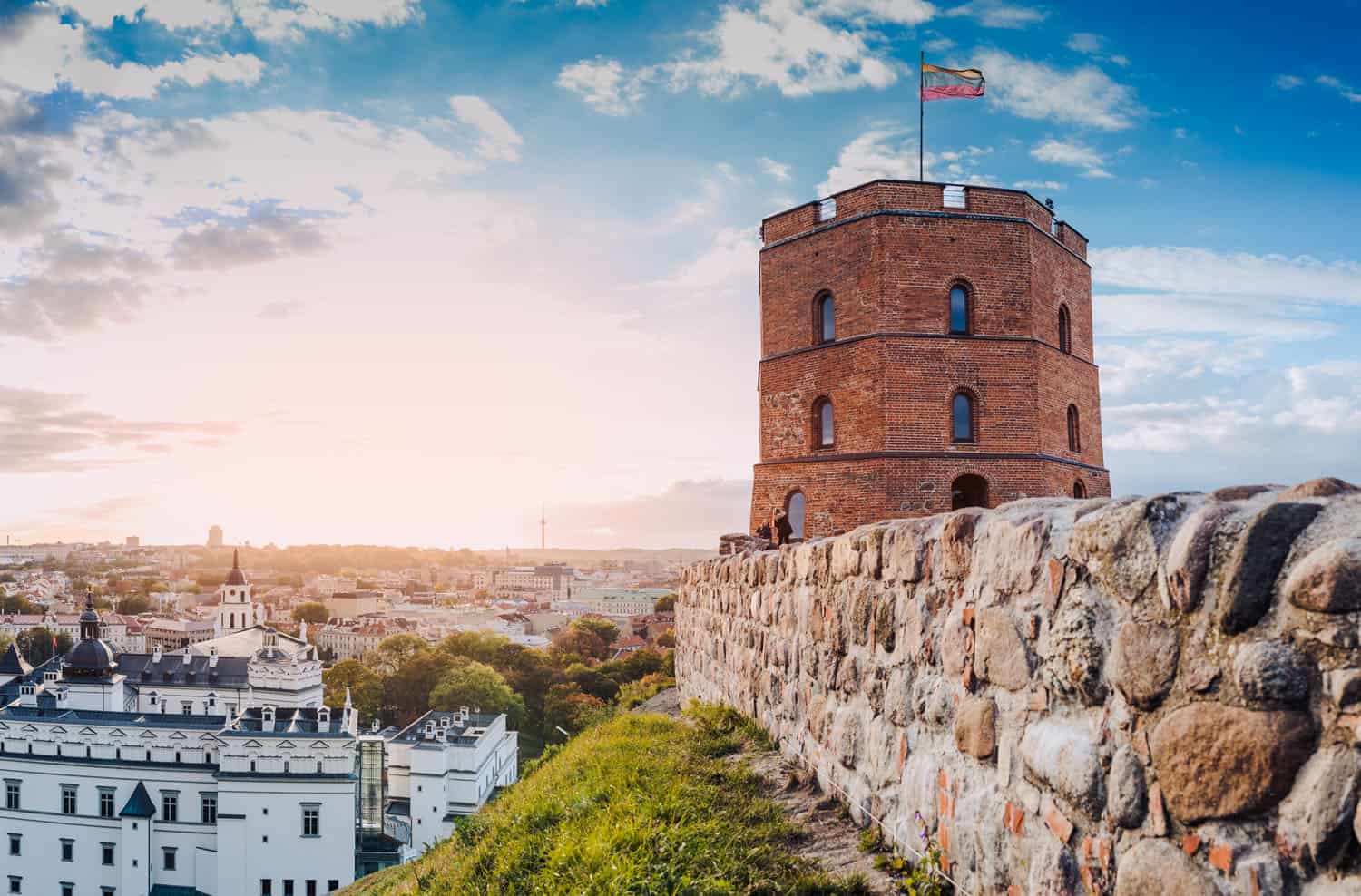
© GO Vilnius. A panoramic view of Vilnius from Gediminas Tower - one of the must see places in Lithuania
Vilnius is truly an amazing city wherever you think it is. This is actually Vilnius tourism ad made last year to attract tourists and travellers to the capital of Lithuania (you can explore a special Where is Vilnius website dedicate to this ad campaign). You might be wondering what is so amazing about Vilnius. Well, it is a very diverse city. Most of the travellers and tourists visiting Vilnius are fascinated by Vilnius Old Town which is one of the largest in the region. It is also included into UNESCO World Heritage List. Some people do not even step out of Vilnius Old Town during their visit. And you cannot blame them. The narrow winding streets, magnificent churches on every corner (visit the church of St. Peter and St. Paul, which is famous for its interior!), hidden courtyards can take quite some time to explore and take in. So many places to take excellent pictures! However, if seeing is not enough for you, you can dive deep in the history of Vilnius and Lithuania by reading some guidebooks, visiting museums or joining Vilnius city tours run by professional local guides. Vilnius has always been a multicultural city surrounded by strong and powerful neighbours, so there is a lot to explore – from the very beginning of the capital of the Grand Duchy of Lithuania, the Golden Age during the times of Polish-Lithuanian Commonwealth when Vilnius Old Town got it’s shape, to the tragic history of occupations, suppression and Lithuanian Jews.
Even though Vilnius Old Town is the place that attracts most of the tourists in Vilnius, we recommend you to explore more of this beautiful city. Just a few minutes from Vilnius Old Town, you can find Uzupis - a bohemian artists’ republic with its own constitution, rules and plenty of artworks. If you are the fan of street art, you can visit Open gallery – an open air street art gallery with over thirty murals made by artists from all over the world in the territory of former Soviet factory, or wonder around the New Town (Naujamietis) where you can find weird sculptures, more murals and many cool new restaurants and cafes, some bars. If the weather is not the best, you can check out some cool Vilnius museums. The most popular ones are Museum of Occupation and Freedom Fights for people who are interested in the history after WWII and Palace of the Grand Dukes of Lithuania for the history of Grand Duchy of Lithuania. If you are into art, check out the most popular museum in Vilnius among locals - MO museum. Do not forget to taste some local food in traditional Lithuanian restaurants all over Vilnius city centre and enjoy Vilnius nightlife on Vilniaus & Islandijos streets. You can even fly over Vilnius in hot air balloon, go kayaking in Vilnia or Neris rivers during the summer time.
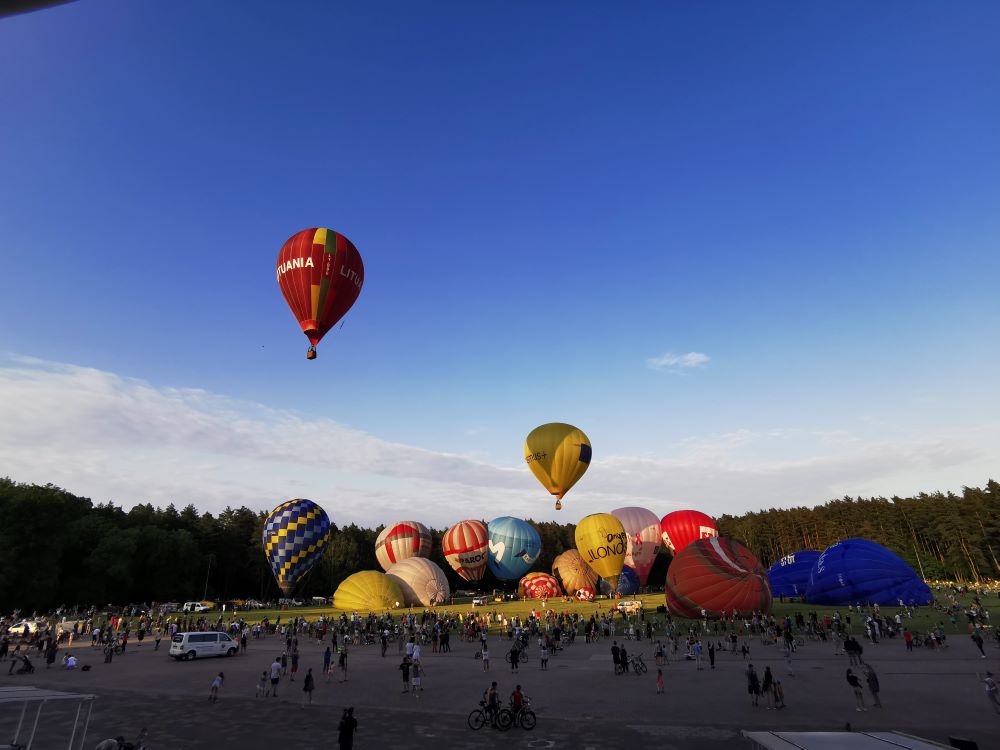
© Vilnius with Locals tours. One of the unique attractions in Lithuania - hot air balloons taking off at Vingis Park for a flight over Vilnius.
If you are visiting Vilnius for the first time, we recommend joining Vilnius free walking tour. It is a great way to get an overview of Vilnius, Lithuania and history just into 2 hour walking tour. There is no fixed fee for the tour, so you can give the guide whatever you feel he or she deserves! Our guides are also always ready to give you recommendations and local insights to help you to explore Vilnius and Lithuania better. Just ask! We are also based in Vilnius, so if you check our blog on things to do in Vilnius, you might find more useful posts about activities, local events, history, tips and recommendations. Here is one for 5 things to do in Vilnius for every traveller.
If you have only a few days to visit Lithuania, Vilnius is the place you should travel to.
Trakai
Time to spent in Trakai: half a day
Best time to visit Trakai: early morning
Trakai is a beautiful small historical town surrounded by lakes approximately half an hour away from Vilnius. The town is mainly famous for its red brick Trakai castle on the island in the middle of the lake. It is one of the most popular tourist attractions in Lithuania and a must see place for anyone visiting Lithuania. The Grand Dukes of Lithuania used to reside in the castle and the town is an important reminder of the glorious Lithuania’s past. Trakai also offer a lot of picturesque views as the town is surrounded by lakes.

© Vilnius with Locals tours. The most visited place in Lithuania - Trakai with its red brick castle in the middle of the lake
It gets very busy in Trakai during the summer season (May – September), especially during the weekends when locals also flood this cosy little town. We recommend you to get to Trakai early in the morning so you could enjoy the views without crowds of people.
If the weather is nice, you can rent a boat to float around the castle. It is very easy to do, as there many people offering water activities around the lakes. Otherwise, you can visit a museum inside Trakai castle. The entrance costs 8 EUR. However, if you have been to other castles in Europe, do not expect to see a lot in there. Lithuania has always been between fighting sides and many things were lost during history.
One more must thing to do in Trakai is try kibinas - traditional food of the Karaites community in Trakai. Karaites were brought to Lithuania from Crimea over 600 years ago and preserved their traditions. You can not only taste kibinas or other dishes Karaites make, but also find their cute wooden houses with three windows facing the street as well as their house of worship called Kenesa and a tiny museum to learn more about this small community still living in Trakai. If you are wondering where to get kibinas, you will find anywhere closer to the castle. I would recommend you to take away a few kibinas, then rent a boat and enjoy this dish in the middle of the lake!
You can get to Trakai very easily from Vilnius by public transport or if you are active, you can even try cycling from Vilnius to Trakai! Also, you do not need a lot of time to explore Trakai. Actually half a day is enough to see the castle, try kibinas and swim in the lake!
The Hill of Crosses
Time to spent in the Hill of Crosses: around 1 hour
Best time to visit the Hill of Crosses: daytime
Hill of Crosses is also consider as one of the highlights of Lithuania. A powerful and mysterious place with thousands of crosses. It's hard to reach it by public transport, but it’s possible. Just check our blog post about how to get to the Hill of Crosses.
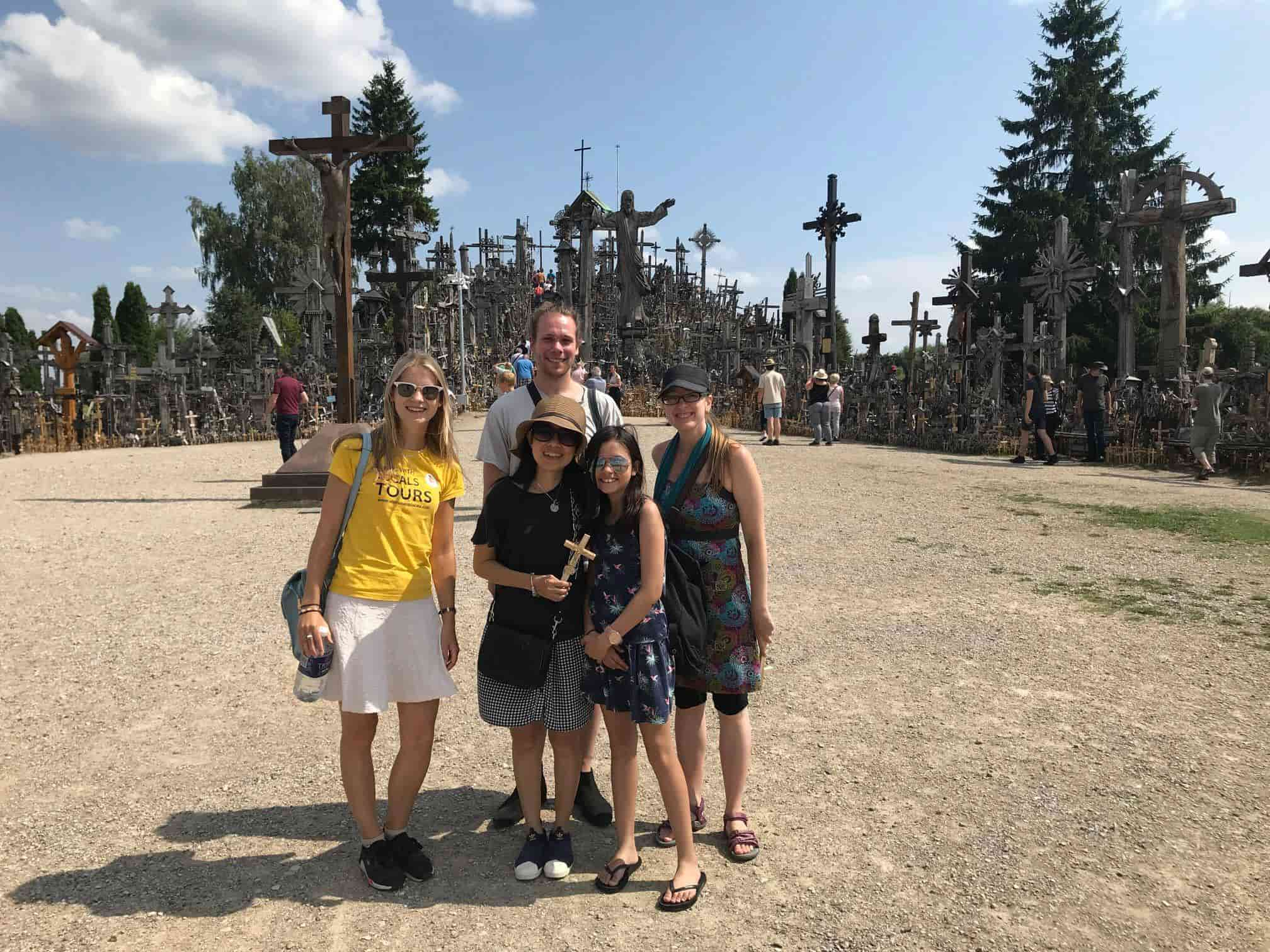
© Vilnius with Locals tours. Visiting one of the unique tourist attractions in Lithuania - Hill of Crosses - with Vilnius with Locals tour guide
Hill of Crosses represents the resistance of Lithuanians through the hardships of the last two centuries when Lithuania was under Soviet rule and a part of the Russian Empire. During those times bringing crosses to the hill that authorities tried to destroy helped Lithuanians to not to forget what they truly believed in.
By the way, Lithuania is quite a flat country, so do not expect to see a huge mountain with thousands of crosses. It is really tiny. However walking on tiny paths among thousands of crosses brought here by Lithuanians and people from all over the world is quite exciting. You can even find a cross that was sent to the Hill of Crosses by the Pope John Paul II after he visited Lithuania in 1993!
The best way to visit the Hill of crosses would be to include in your itinerary around Lithuania and Latvia. It is quite far away from the major cities and there is not much to do. You can have a short stop on the way to Riga, Klaipeda from Vilnius or Kaunas or the other way around.
Kaunas
Time to spent in Kaunas: 1-2 days
Best time to visit Kaunas: May - September
Kaunas is the second biggest city of Lithuania, the former capital of the country, located 1 hour 15 min drive from Vilnius. It is quite different from Vilnius and if you want to get a better idea of Lithuania, it is definitely worth to include it in your travel around Lithuania.
Kaunas is very proud of its modernist architecture which gave a shape to the city during interwar period in the last century when Kaunas was the provisional capital of Lithuania (what about Vilnius you say? Well, it was a part of Poland at that time!). Kaunas is actually waiting for UNESCO to recognize this modernist Kaunas architecture as a part of the UNESCO World Heritage list! Fingers crossed. You can enjoy this modernist architecture on Laisves avenue as well as streets around in the city centre.
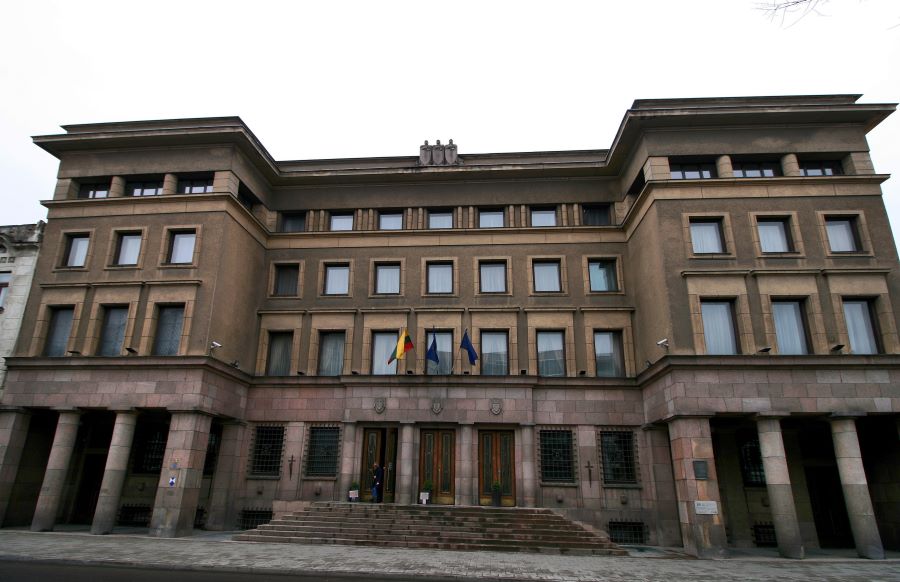
© Gintaras Vitulskis. One of the examples of modernist architecture in Kaunas
Kaunas is also known as a capital of the second “religion” in Lithuania - basketball!! If you have a chance, go to a basketball match in Žalgirio arena to see how crazy Lithuanians are about basketball :) It does not matter if you like basketball or not. It is just fun to feel the awesome atmosphere.
You probably got an idea that Kaunas is all about modernism and basketball. However it is not true. Kaunas also has a beautiful tiny old town to explore (Kaunas was even a part of Hanseatic league and every May medieval Hansa days’ festival attracts a lot of visitors to Kaunas), a modern street art scene, quite a few interesting museums to visit. Probably one of the most unusual museums you can find in Kaunas is Devil’s museum. You can find over three thousand devils there – masks, paintings, sculptures, souvenirs, etc. Not too far away from Devil’s museum, you can find one of the oldest funiculars in Europe! We really recommend to take a ride up where you will find a huge white Christ's Resurrection's church. From the top of the church you can see a great panoramic view of Kaunas.
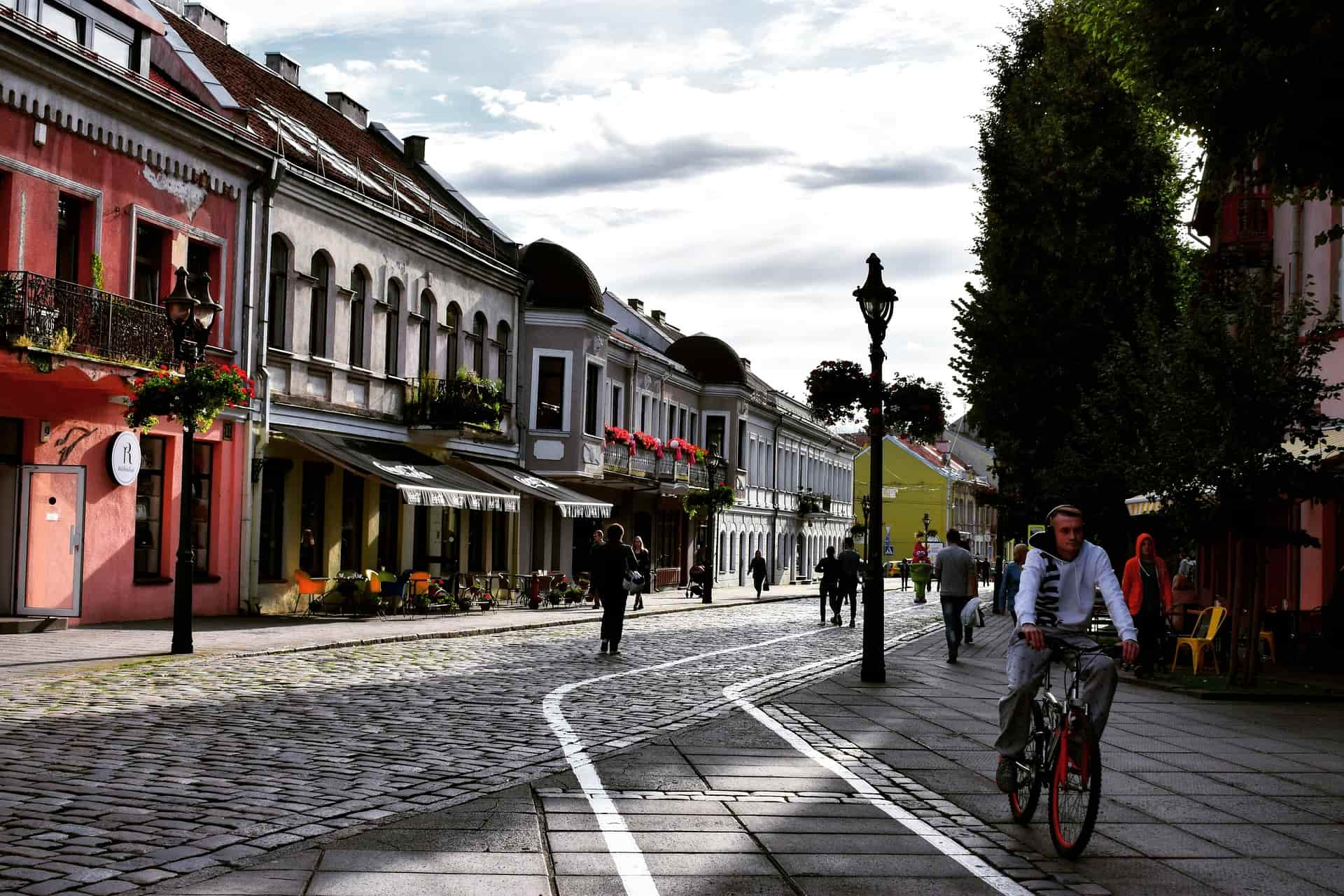
© Vilnius with Locals tours. One of the main streets in Kaunas city centre
In the outskirts of Kaunas, you can find the Ninth fort – a memorial place and museum dedicated to the Jews who perished there during WWII. It is a must visit place to pay a tribute to the harsh history.
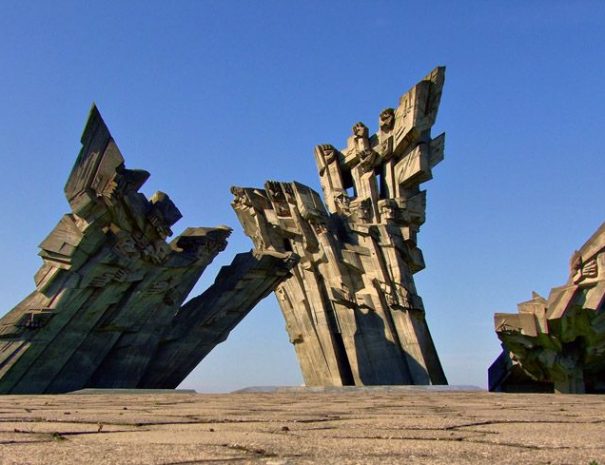
IX Fort - a memorial museum to the victims of Holocaust
If you happen to be in Kaunas on Saturday, join Kaunas Free Tour. Lovely locals guide will give you a great insight into locals traditions, the new "modern" part of the city and of course tell you many stories about the interwar period (that's when Kaunas was the capital of Lithuania for almost 20 years) and show some parts of Kaunas Old Town.
As you can see, there are quite a lot of things to do in Kaunas if you decide to include it in your travel around Lithuania. One more thing to mention is that Kaunas will be European Capital of culture in 2022. If you do not visit Lithuania this year, you could plan your trip next year and expect more action in Kaunas!
Aukštaitija National Park
Time to spent in Aukštaitija National park: from one day to one week
Best time to visit Aukštaitija National Park: July-August
Aukštaitija National Park is a perfect spot for all the nature lovers. If you visit Lithuania during the summer time, this is one of the most popular destinations for Lithuanians to get away from city life and enjoy many lakes, hills, forests and ethnic villages. You can find different hiking, cycling and water routes. However you can rarely meet international travellers and tourists travelling around this park. The problem might be the infrastructure as the best way to get around the park is by your own car and it really lacks public transportation. Also, most of the people flood Aukštaitija National Park during the weekends, so some places might be closed during the weekdays. However if you desire for some nature and do not mind local adventure, we really recommend you to include Aukštaitija National Park in your travel around Lithuania. You will be impressed by the greenery and all the lakes around you.
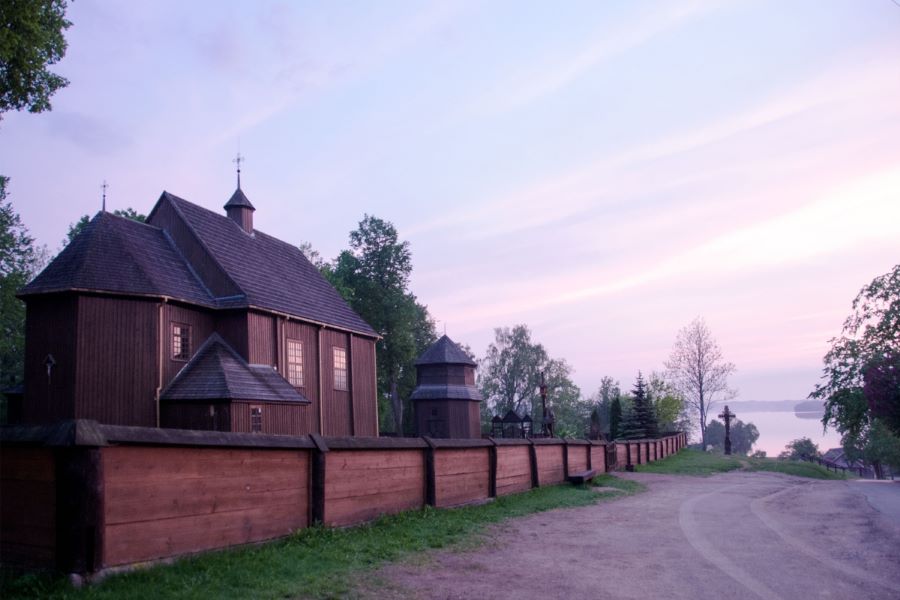
© Birutė Simanavičienė. A wooden church of Palūšė with a view to Lūšys lake - one of the attractions in Aukštaitija National Park
A must visit place in Aukštaitija National Park is Palūšė where the visitor center of Aukštaitija National Park is located. You can find quite a few accommodation options in Palūšė if you want to spend a few days in the park to enjoy nature. Palūšė is a small tourist village which gets really busy in summer during the weekends. One of the tourist attractions in Palūšė is the oldest surviving wooden church in Lithuania, but most of the people come here because of the hiking routes in the forest, beaches next to Lūšys lake (that’s where the name Palūšė comes from – near Lūšys lake). You can also rent boats, kayaks, etc. Palūšė is the point where most of the cycling and hiking routes start in Aukštaitija National Park, so it is actually a good base for further exploration.
You can get to Palūšė by public transport. You need to take a train or a bus to Ignalina from Vilnius (around 2 hours) and catch a local bus to Palūšė. It should take around 15 min to get there from Ignalina. However you can also walk or cycle to Palūšė (around 5 km). There is a bunch of bicycle rentals in Ignalina!
However, the best way to get around and see the most of Aukštaitija National Park is by car. You will be able to drive around, enjoy spectacular views of nature around you and stop wherever you want to explore different parts of the park. One of the cultural attractions in Aukštaitija National Park is the museum of Ancient Beekeeping. It seems like a museum itself is like a little village made of six buildings. You can book a guided tour around the museum to learn more about beekeeping, get tips from herbalists and beekeepers or take relaxation in the attic listening to the sounds of bees and smelling the honey.
Another must visit in Aukštaitija National park is a legendary Ladakalnis hill. It surrounded by lakes. If you go up the hill (not that high :D - 176 m), you can see six different lakes! However you need to walk around a bit to find them all as you cannot see them from one spot because of the trees. Driving to Ladakalnis is also very picturesque. Around 2 km from Ladakalnis, you can find one of the symbols of the park - an old Ginučiai wooden mill.
There might be the lack of information in English about this nature gem in Lithuania. However we found a detailed brochure in English made by Aukštaitija National Park visitor centre. You can find a bunch of hiking, cycling, water and road transport itineraries around the park! Most of the routes start in Palūšė. So if you are a nature lover, check it out, and include one of the routes in you travel around Lithuania.
Lithuanian Seaside (Curonian Spit)
Time to spent on the Lithuanian seaside: 3-7 days
The best time to visit Lithuanian seaside: May - September
Lithuania has only around 90km of the seaside. That’s is not a lot compared to our neighbours, but those kilometers are very well used! You can find the small cute fishermen villages, the long white sand beaches, an ice-free port in Klaipeda (one of the few in northernmost Europe!), a party town Palanga and even a UNESCO World Heritage Site – Curonian Spit aka Neringa!
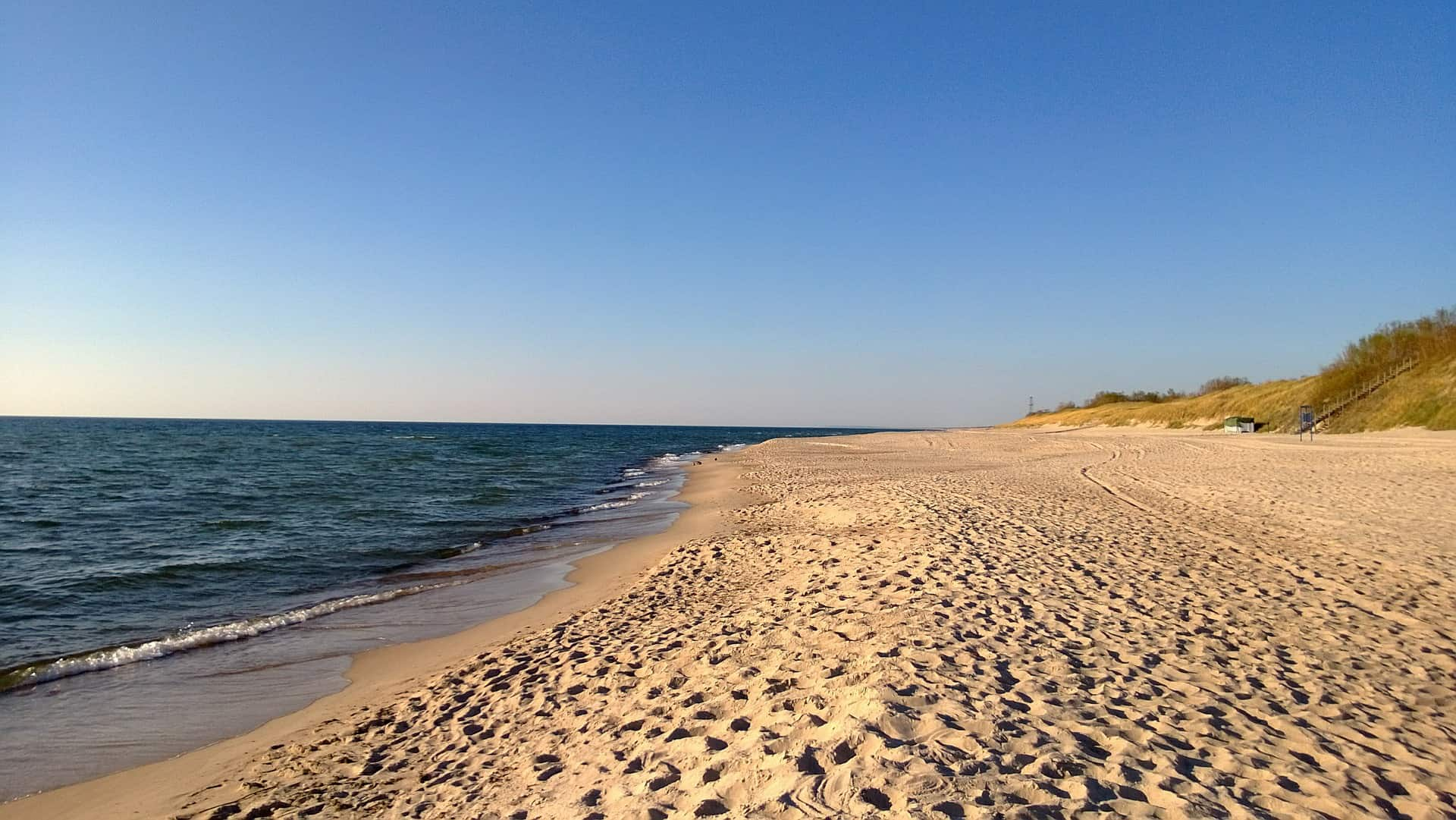
© Vilnius with Locals tours. Empty white sand beaches of Lithuanian Seaside
If you come to Lihuanian seaside during the winter time, probably not much will be going on, but during summer months it gets really crowded. In summer, Palanga becomes a party capital of Lithuania. Even some nightclubs from Kaunas and Vilnius closes down for summer time and go to Palanga. That is the place where party happens! Sometimes we joke that Palanga is like Miami of Lithuania.
If you are not a party person and you don’t fancy crowds of people, you can base yourself in Klaipeda or one of the fishermen villages in Curonion Spit.
Klaipėda is the main port of Lithuania. It has been a German city for a long time, so you might get the feeling you are in Germany in Klaipėda’s Old Town. Usually Klaipėda is less crowded than Palanga as the main beaches are a bit further from the city centre. The major event in Klaipėda is “The Sea Festival” (Jūros Šventė) which takes place on the last weekend of July. It is very busy, but a lot of fun if you fancy some local events. Klaipeda is located around 30 km from Palanga and only a few minutes ferry ride from Curonian Spit, which is an amazing attraction in Lithuania, a part of UNESCO World Heritage List. This unique piece of land stretches around 98 km in length and the width varies from 400 m (!) to 4 km. On one side you will find the Curonian lagoon, but just in a few minutes you can enjoy the Baltic Sea with white sand beaches. Half of it belongs to Lithuania, another half to Russia (Kaliningrad region). Several small fishermen villages attract travellers to stay in Curonian Spit to feel all of its beauty. Probably the most well-known is Nida. It is the biggest in the Curonian Spit and has the most attractions. A must visit in Nida are white sand dunes. You might feel like you are in the dessert. And you can see Russia from those sand dunes as Nida is located just on the Russian border. You can even find the sculpture of Jean Paul Sartre who was photographed enjoying the nature of Curonian Spit in 1965. Also, a famous German novelist Thomas Mann lived there for couple of years.
Another fishermen village worth mentioning is Juodkrantė. It is definitely less crowded. An interesting Lithuanian tourist attraction in Juodkrantė is the Hill of Witches – a unique open air museum of wooden sculptures of witches, devils and other folk characters. Every Lithuanian has at least one photo made on the Hill of Witches! Next to Juodkrantė you can find ‘the Dead forest’. Sounds a bit creepy, doesn’t it? But it is worth a visit. A very strange place where the colony of cormorants is located. Once you get closer you start hearing the sounds of cormorants, thousands of them. Their acid poop kills the pine trees, so you will see a lot of dead trees around you. However cormorants poop is good for deciduous trees, so you can already see the small ones growing.
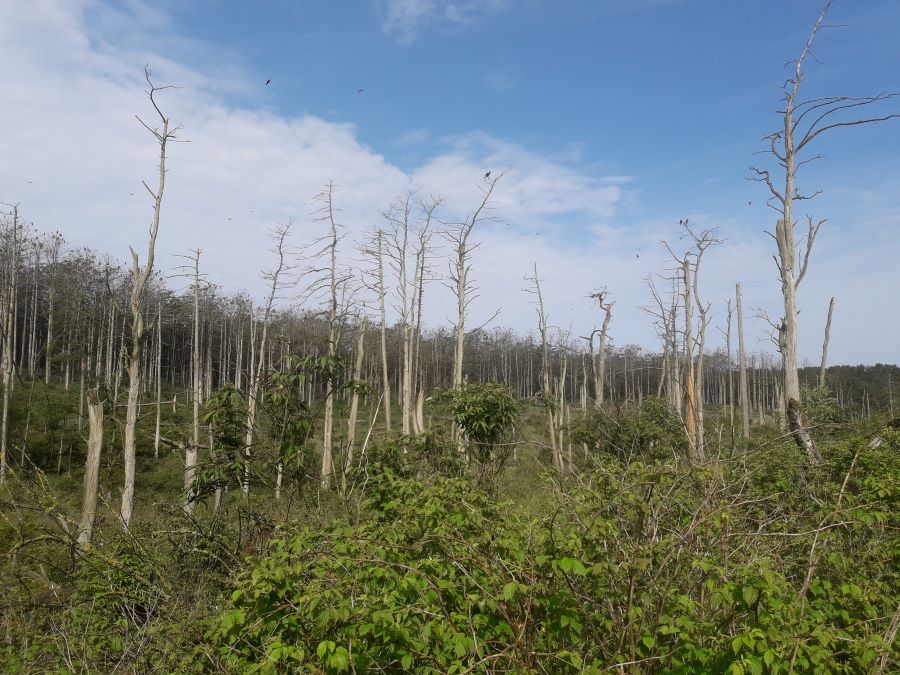
© Vilnius with Locals tours. 'Dead Forest' close to Judkrante where you can find the colony of cormorants
You can also find the most popular museum among Lithuanians in Curonian Spit – Lithuanian Sea museum & Dolphinarium.
If the weather is nice, it’s a great idea to cycle from Klaipėda to Nida (50 km one way + ferry ride) on the Curonian Spit or from Klaipeda to Palanga (30 km one way). Cycling is pretty easy to do even for not an experienced biker, as all the way is pretty flat.
Lithuanian seaside is a popular tourist attraction during summer time even among Lithuanians. Depending on your interests you can stay in different places, but it is a must to visit Curonian Spit during your travel around Lithuania.
If you plan well, you can see all these six must see places in two week holiday around Lithuania. But it might be quite intense, so you can also come a few times to explore different parts of Lithuania.
Visit Lithuania and enjoy this hidden gem of Europe!